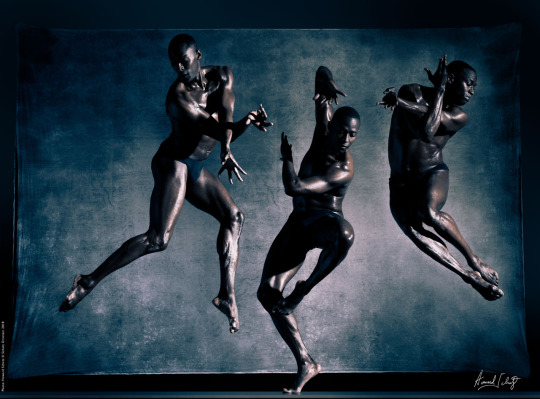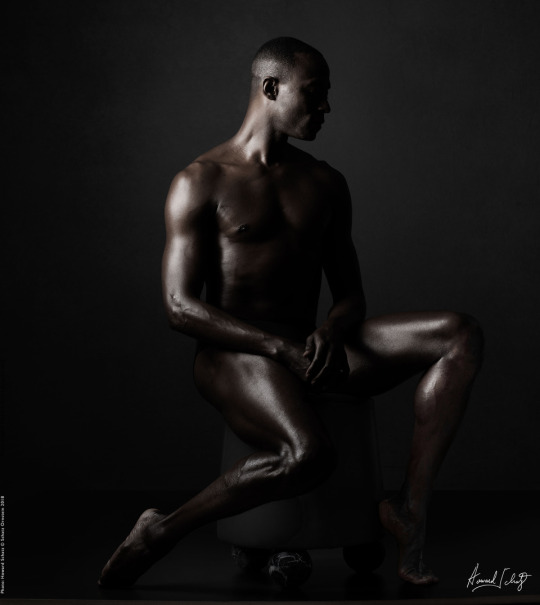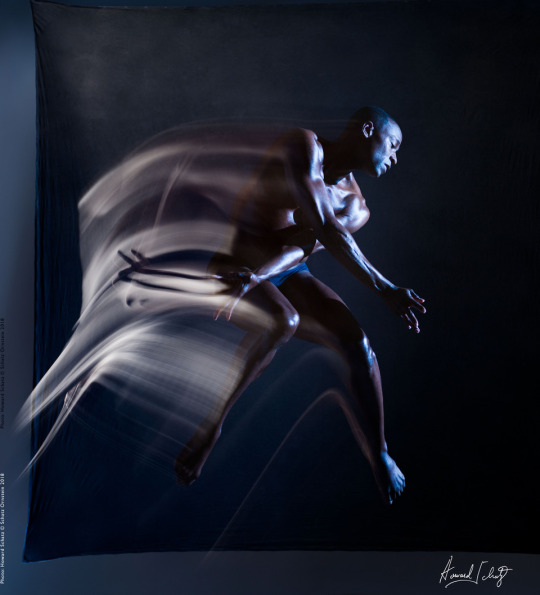
In all my years of photographing dancers – underwater, on stage, in my
studio – I have never lost my awe at these almost other-worldly
performers.
I have never given up my quest to express their kinetic magic in still
imagery, nor my determination to keep moving forward without repeating
myself. In my newest dance project, Modern-Modern Dance, I look at the
way dance is evolving in the hands (and feet and bodies) of the most
talented performers in New York today.
For this latest chapter, I asked the brilliant Samuel Lee Roberts of the
Alvin Ailey American Dance Theater to come to the studio to work with
me to make “dance” imagery and to sit for a series of portraits.

One might think that creating good portraits of professional dancers,
whose bodies, like those of athletes, reflect the physical discipline
needed for success, is almost cheating. Since they are accustomed to
looking good for audiences and are usually remarkably good to look at, a
compelling portrait must seem close to automatic.
But that is the problem, in a sense…there’s a temptation to just put a
dancer in front of the lens and snap away. Yet making photographs that
express not only beauty and grace, but also the truth about dance and
dancers, and if you’re lucky a new truth, is a challenge I’ve been
grappling with for my entire photographic career.

Success in this quest begins with connecting with the dancer, and
explaining to him or her the difference between a “pose” and a moment
snatched from the fluid continuum of dance. Since a dancers’ art is one
in which movement is everything, and one thing always leads to another,
and another, I have to convince them to move without hesitation, as they
do in performance, and let me choose the moments that will capture the
essence of dance.

In the shoot with Roberts, however, I wanted to “imply” his dancer’s
grace without having him move at all. I wanted the portraits to contain a
certain tension, as if Roberts was momentarily “between” movements and
in the next moment would spring into action again.
He was a wonderful collaborator, able to turn the camera into a
combination of audience and partner. It was a delightful experience and,
I think, a successful one.

The last photograph (below) of Samuel Lee Roberts was made by leaving
the shutter open so that ambient (available) light would “paint” his
movement and combining that with a single flash as the shutter closed
(after 0.4 sec).
The secret to making this work is to direct the lights opposite each other so they don’t compete and muddy up a pristine image.
Maintaining the integrity of the light – the ambient light comes from
the left and the flash from the right—they do not “see” each other and
their minimally blending functions remain pure.

